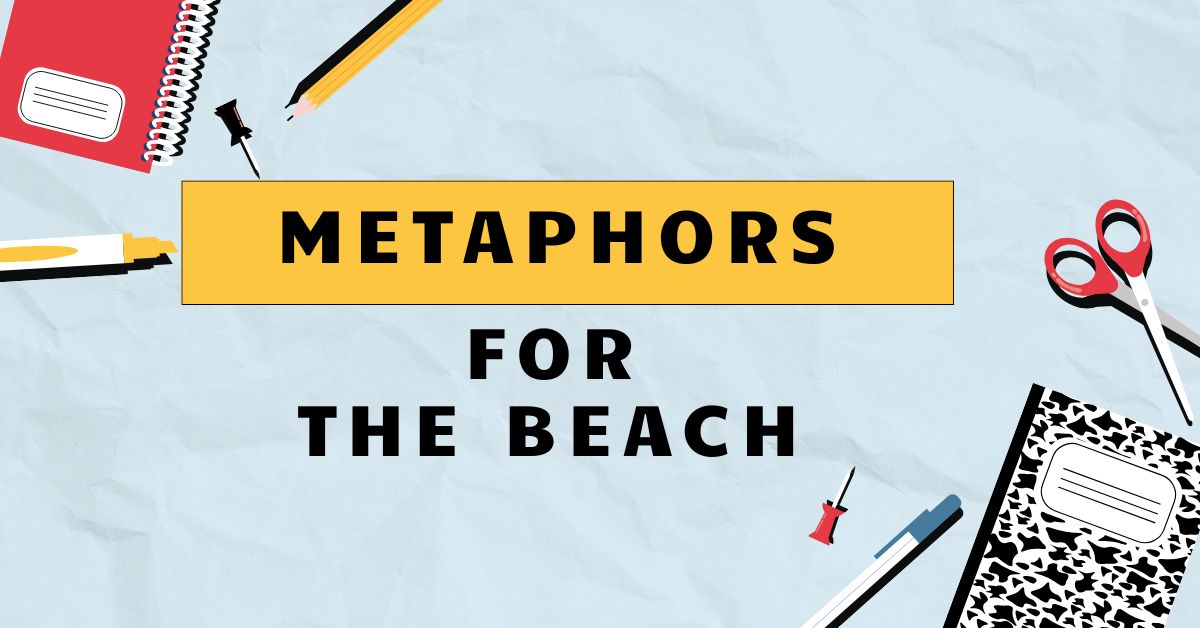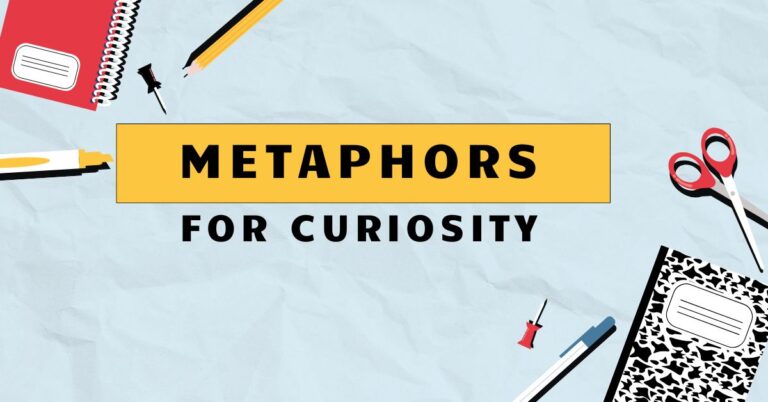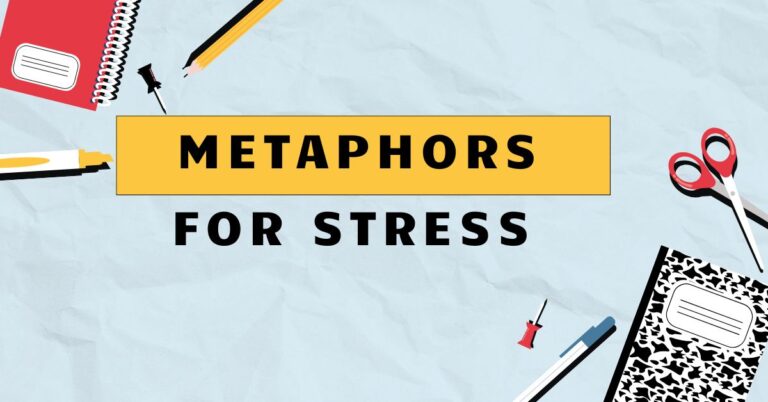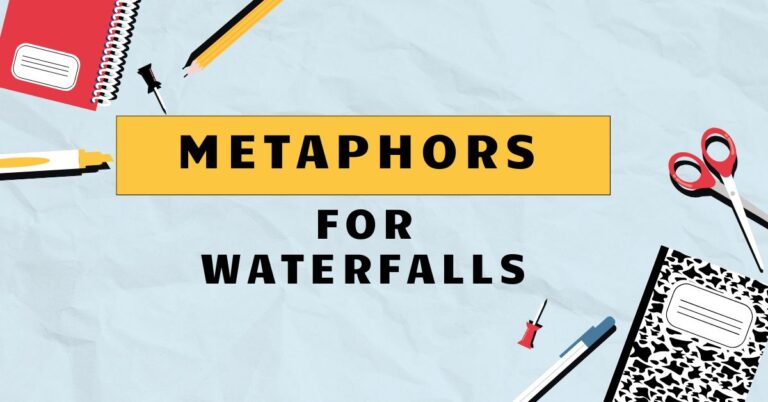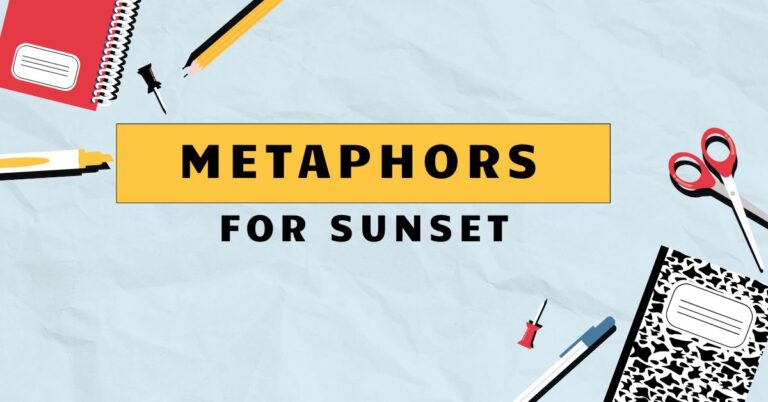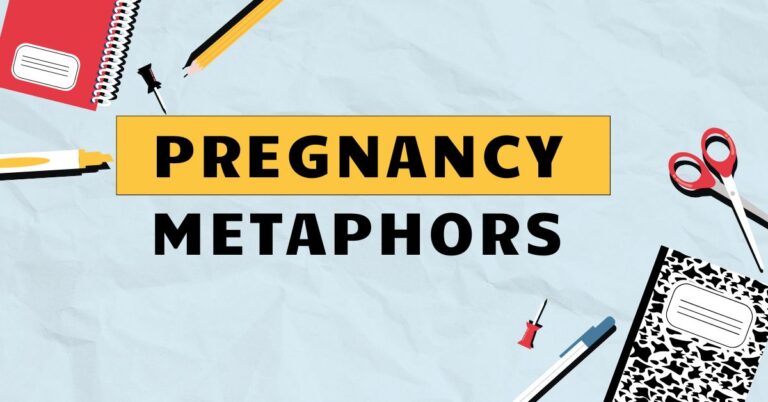47 Beach Metaphors: A Grammatical Exploration of Figurative Language
Metaphors are an essential part of the English language, enriching our communication by allowing us to express abstract ideas through concrete comparisons. Understanding how metaphors work, particularly in specific contexts like describing a beach, can significantly enhance both our comprehension and expressive abilities.
This article delves into the world of beach metaphors, exploring their grammatical structure, diverse applications, and the nuances that make them so powerful. This guide is perfect for English language learners, writers seeking to add depth to their prose, and anyone fascinated by the creative potential of language.
Table of Contents
- Introduction
- Definition of Metaphor
- Structural Breakdown of Beach Metaphors
- Types and Categories of Beach Metaphors
- Metaphors for the Ocean
- Metaphors for the Sand
- Metaphors for the Sun
- Metaphors for the Waves
- Metaphors for the Beachgoers
- Examples of Beach Metaphors
- Usage Rules for Beach Metaphors
- Common Mistakes with Beach Metaphors
- Practice Exercises
- Advanced Topics in Beach Metaphors
- Frequently Asked Questions
- Conclusion
Definition of Metaphor
A metaphor is a figure of speech that directly compares two unrelated things without using “like” or “as.” It asserts that one thing *is* another, creating a vivid image and transferring qualities from one subject to another. Understanding the core function of a metaphor is crucial for appreciating its impact on language.
Metaphors are not merely decorative; they are fundamental to how we understand and conceptualize the world around us.
Metaphors serve several key functions in language. They allow us to express abstract concepts in more concrete terms, making them easier to grasp.
They add emotional coloring and depth to our writing and speech. They can also reveal new perspectives and insights by highlighting unexpected similarities between seemingly disparate entities.
Furthermore, metaphors engage the reader or listener, prompting them to actively participate in the meaning-making process.
In the context of beach metaphors, we use the beach, its elements, and related experiences to describe and understand other aspects of life. For example, the vastness of the ocean might be used to represent the overwhelming nature of a challenge, or the warmth of the sun could symbolize comfort and joy.
These comparisons enrich our understanding and allow for more evocative communication.
Structural Breakdown of Beach Metaphors
A metaphor consists of two main components: thetenorand thevehicle. The tenor is the subject being described, while the vehicle is the object or concept used to describe the tenor.
Consider the metaphor “The ocean is a restless giant.” Here, the ocean is the vehicle, and it is used to describe something else (perhaps a feeling of unease or the scope of a problem) which is the tenor. The connection between the tenor and the vehicle is the basis of the metaphor.
This connection relies on shared characteristics or associations.
The effectiveness of a metaphor depends on the strength and relevance of the connection between the tenor and the vehicle. A good metaphor should be both surprising and insightful, revealing a new way of looking at the tenor.
It should also be appropriate for the context and audience. Overused or clichéd metaphors lose their impact and can detract from the overall effect.
In analyzing beach metaphors, we can examine how different elements of the beach (e.g., sand, waves, sun) are used as vehicles to describe various tenors (e.g., emotions, experiences, people). By understanding the structural components of a metaphor, we can better appreciate its complexity and artistry.
We can look at the specific qualities of the beach element being used and how those qualities are being transferred to the thing being described.
Types and Categories of Beach Metaphors
Beach metaphors can be categorized based on the specific element of the beach being used as the vehicle. Each category evokes different associations and can be used to describe a wide range of tenors.
We will explore metaphors associated with the ocean, sand, sun, waves, and beachgoers.
Metaphors for the Ocean
The ocean, with its vastness, depth, and power, is a rich source of metaphors. It can represent the unknown, the infinite, or the overwhelming.
Ocean metaphors often convey a sense of mystery, danger, or boundless potential. The ocean can be used to describe emotions, challenges, or even the human psyche.
Metaphors for the Sand
Sand, fine and abundant, often symbolizes time, impermanence, or the multitude of details that make up a larger picture. It can also represent vulnerability or the fleeting nature of life.
Sand metaphors might be used to describe memories, experiences, or the passage of time.
Metaphors for the Sun
The sun, a source of light and warmth, typically represents hope, joy, or clarity. It can also symbolize energy, vitality, or the life-giving force.
Sun metaphors often convey a sense of optimism, positivity, or enlightenment. The sun is often used to describe people, ideas, or experiences that bring happiness and inspiration.
Metaphors for the Waves
Waves, with their rhythmic motion and fluctuating power, often symbolize change, cycles, or the ebb and flow of life. They can also represent challenges, obstacles, or the constant movement of time.
Wave metaphors are often used to describe emotions, relationships, or the ups and downs of life.
Metaphors for the Beachgoers
Beachgoers, with their diverse activities and attitudes, can represent different aspects of humanity. They can symbolize relaxation, enjoyment, or the pursuit of leisure.
Beachgoer metaphors might be used to describe people’s behavior, motivations, or social interactions.
Examples of Beach Metaphors
The following tables provide diverse examples of beach metaphors, categorized by the beach element used as the vehicle. Each example demonstrates how the qualities of the beach element are transferred to the tenor, creating a vivid and meaningful comparison.
The table below shows examples of using the ocean as a metaphor for various concepts, such as emotions, challenges, and experiences.
| Metaphor | Tenor | Explanation |
|---|---|---|
| Her sadness was a deep ocean. | Sadness | Compares the depth and vastness of sadness to the ocean. |
| The challenge was an endless ocean to cross. | Challenge | The challenge is portrayed as vast and seemingly insurmountable, like an ocean. |
| Life is an ocean of possibilities. | Life | Life’s potential is likened to the boundless possibilities of the ocean. |
| His anger was a stormy ocean. | Anger | Compares the intensity and turbulence of anger to a stormy ocean. |
| The project was a vast ocean of data. | Project | The project involves a massive amount of data, similar to the vastness of an ocean. |
| The ocean of time stretched before them. | Time | Time is vast and unending, like the ocean. |
| She felt lost in an ocean of despair. | Despair | The feeling of despair is overwhelming and all-encompassing, like being lost at sea. |
| His knowledge was an ocean of information. | Knowledge | His understanding is deep and extensive, like the depths of the ocean. |
| The city was an ocean of faces. | City | The city is filled with countless people, like an ocean filled with water droplets. |
| Her love was a calm ocean. | Love | Love is peaceful and serene, like a calm ocean. |
| The political landscape was a turbulent ocean. | Politics | The political situation is unstable and unpredictable, like a turbulent ocean. |
| Their journey was an ocean of adventures. | Journey | The journey is full of numerous and exciting experiences, like an ocean full of discoveries. |
| The business world is a competitive ocean. | Business | The business environment is challenging and full of rivals, like a competitive ocean. |
| His memory was an ocean of forgotten moments. | Memory | His memory contains a vast number of moments that have been forgotten, like the hidden depths of the ocean. |
| The internet is an ocean of information. | Internet | The internet contains a huge amount of data, similar to the vastness of an ocean. |
| Her dreams were an ocean of possibilities. | Dreams | Her dreams represent endless opportunities and potential, like the boundless expanse of the ocean. |
| The legal system is a complex ocean. | Legal System | The legal system is intricate and difficult to navigate, like a complex ocean. |
| His mind was an ocean of thoughts. | Mind | His mind is filled with countless thoughts, like an ocean filled with water droplets. |
| The project’s scope was an ocean of tasks. | Project | The project involves a massive number of tasks, similar to the vastness of an ocean. |
| The crowd was an ocean of faces. | Crowd | The crowd is large and overwhelming, like an ocean filled with people. |
| Her potential is an ocean waiting to be explored. | Potential | Her potential is vast and untapped, like an unexplored ocean. |
| The amount of work was an ocean of duties. | Work | The amount of work is overwhelming and endless, like an ocean of duties. |
| The possibilities are an ocean of opportunities. | Possibilities | The opportunities are vast and endless, like an ocean of chances. |
| The sea of information surrounded him. | Information | There is an overwhelming amount of information available. |
This table illustrates how sand can be used metaphorically to represent time, memories, or details.
| Metaphor | Tenor | Explanation |
|---|---|---|
| Time is like sand slipping through our fingers. | Time | Time is fleeting and difficult to hold onto. |
| Memories are grains of sand on the beach of our minds. | Memories | Each memory is a small, individual grain that contributes to the whole. |
| The details were like grains of sand, too numerous to count. | Details | The details are so numerous that they are difficult to manage. |
| Her dreams were castles built on sand. | Dreams | Her dreams are fragile and easily destroyed. |
| Life is a beach, and then you run out of sand. | Life | Life is enjoyable but finite. |
| The years passed like grains of sand in an hourglass. | Years | The years passed slowly and steadily. |
| His words were like sand, irritating and abrasive. | Words | His words were unpleasant and caused discomfort. |
| The foundation of their relationship was built on sand. | Relationship | The relationship was unstable and likely to fail. |
| The city’s history is etched in the sand of time. | History | The city’s history is recorded and preserved over time. |
| Her hopes were swept away like sand by the tide. | Hopes | Her hopes were destroyed or lost. |
| The desert of her heart was filled with sand of regret. | Regret | Her heart is filled with the feeling of remorse. |
| The friendship was as solid as sand. | Friendship | The friendship was unstable and unreliable. |
| His argument was full of holes, like trying to hold water with sand. | Argument | His argument was weak and unconvincing. |
| The truth was buried beneath layers of sand. | Truth | The truth was hidden or obscured. |
| The contract was as binding as sand. | Contract | The contract was not legally enforceable. |
| Their love was a sandcastle, beautiful but doomed to fall. | Love | Their love was beautiful but fragile and destined to end. |
| The past is like footprints in the sand, easily washed away. | Past | The past is easily forgotten or erased. |
| The project was as stable as a sand dune. | Project | The project was unstable and likely to collapse. |
| His promises were written in sand. | Promises | His promises were unreliable and easily broken. |
| The sands of time keep shifting. | Time | Time is constantly changing and moving forward. |
The following table provides examples using the sun as a metaphor to describe hope, joy, and clarity.
| Metaphor | Tenor | Explanation |
|---|---|---|
| Her smile was the sun after a long winter. | Smile | Her smile brought warmth and happiness after a period of sadness. |
| Hope is the sun that shines through the clouds. | Hope | Hope provides light and optimism even in difficult times. |
| His guidance was the sun, illuminating the path forward. | Guidance | His guidance provided clarity and direction. |
| She was the sun in his otherwise dreary life. | Person | She brought joy and happiness into his life. |
| Love is the sun that warms the soul. | Love | Love provides comfort and happiness. |
| His words were like sunshine, bright and uplifting. | Words | His words were cheerful and encouraging. |
| The truth is like the sun, it cannot be hidden. | Truth | The truth will always be revealed. |
| Her energy was like the sun, radiating to everyone around her. | Energy | Her energy was infectious and positive. |
| The solution was the sun breaking through the fog. | Solution | The solution provided clarity and resolved the problem. |
| His presence was the sun, filling the room with warmth. | Presence | His presence created a welcoming and comfortable atmosphere. |
| Her optimism was a sunbeam in a dark room. | Optimism | Her optimism brought light and hope into a gloomy situation. |
| His ideas were as bright as the sun. | Ideas | His ideas were innovative and intelligent. |
| The victory was the sun rising after a long night. | Victory | The victory brought relief and joy after a difficult period. |
| Her laughter was the sun, chasing away the shadows. | Laughter | Her laughter dispelled negativity and brought happiness. |
| His spirit was as radiant as the sun. | Spirit | His spirit was full of energy and positivity. |
| The opportunity was a sunlit path to success. | Opportunity | The opportunity offered a clear and promising route to success. |
| Her confidence shone like the sun. | Confidence | Her confidence was strong and evident. |
| His wisdom was the sun, guiding them through the darkness. | Wisdom | His wisdom provided guidance and insight. |
| Their love was as warm as the sun. | Love | Their love was comforting and affectionate. |
| The future looked bright as the morning sun. | Future | The future appeared promising and full of hope. |
The following table provides examples of using the waves as a metaphor for change, challenges, and emotions.
| Metaphor | Tenor | Explanation |
|---|---|---|
| Life is a series of waves, some big, some small. | Life | Life is full of ups and downs. |
| Challenges are waves crashing against the shore. | Challenges | Challenges are forceful and can be difficult to overcome. |
| Emotions are like waves, ebbing and flowing. | Emotions | Emotions are constantly changing in intensity. |
| Success comes in waves. | Success | Success is not constant but comes in periods. |
| His anger was like a tidal wave. | Anger | His anger was overwhelming and destructive. |
| The memories washed over her like waves. | Memories | The memories came back suddenly and strongly. |
| The changes in the company came in waves. | Changes | The company experienced a series of changes over time. |
| Their relationship had its waves of happiness and sadness. | Relationship | Their relationship experienced both joy and sorrow. |
| The news hit him like a wave. | News | The news was shocking and overwhelming. |
| The city was a wave of activity. | City | The city was bustling and full of energy. |
| The crowd moved like a wave. | Crowd | The crowd flowed together in a unified motion. |
| The rumors spread like wildfire, a wave of gossip. | Rumors | The rumors spread rapidly and uncontrollably. |
| Their support came in waves after the tragedy. | Support | The support arrived in periods of intense assistance. |
| The market fluctuated like waves on the ocean. | Market | The market experienced constant ups and downs. |
| His influence ebbed and flowed like the tide. | Influence | His influence varied over time. |
| The laughter rippled through the room like a wave. | Laughter | The laughter spread contagiously throughout the room. |
| The project had its waves of progress and setbacks. | Project | The project experienced both advancements and obstacles. |
| His determination surged like a wave. | Determination | His determination was strong and unwavering. |
| The fear washed over him in waves. | Fear | The fear came in intense and recurring episodes. |
| Their enthusiasm was a wave that lifted everyone’s spirits. | Enthusiasm | Their enthusiasm was contagious and uplifting. |
The table below provides examples of beachgoers being used metaphorically to describe people’s behaviours and attitudes.
| Metaphor | Tenor | Explanation |
|---|---|---|
| He was a beachcomber, always searching for something valuable. | Person | He was always on the lookout for opportunities or hidden treasures. |
| She was a sunbather, soaking up all the attention. | Person | She enjoyed being the center of attention. |
| They were like children building sandcastles, full of creativity. | People | They were imaginative and enjoyed creating things. |
| He was a lifeguard, always watching out for others. | Person | He was caring and protective of those around him. |
| She was a surfer, riding the waves of change. | Person | She was adaptable and embraced new experiences. |
| They were beach volleyball players, competitive and energetic. | People | They were highly competitive and full of energy. |
| He was a lone beach walker, enjoying the solitude. | Person | He preferred being alone and enjoyed peaceful moments. |
| She was a sandcastle builder, creating something beautiful and temporary. | Person | She enjoyed creating beautiful things that were not meant to last. |
| They were like a group of swimmers, diving into new adventures. | People | They were adventurous and eager to try new things. |
| He was a sun worshiper, always seeking warmth and light. | Person | He sought positivity and happiness. |
| She was a kite flyer, letting her dreams soar high. | Person | She was ambitious and had big dreams. |
| They were like a family on vacation, enjoying each other’s company. | People | They valued their relationships and enjoyed spending time together. |
| He was a shell collector, gathering knowledge and experiences. | Person | He was curious and enjoyed learning new things. |
| She was a beach reader, escaping into a world of stories. | Person | She enjoyed reading and immersing herself in fictional worlds. |
| They were like a group of friends, playing frisbee on the beach. | People | They were fun-loving and enjoyed spending time with friends. |
| He was a beach jogger, always striving for better health. | Person | He was dedicated to improving his physical well-being. |
| She was a sand artist, creating intricate designs. | Person | She was creative and skilled at making detailed art. |
| They were like a crowd of tourists, eager to see the sights. | People | They were curious and excited to explore new places. |
| He was a beach cleaner, dedicated to preserving the environment. | Person | He cared about the environment and worked to protect it. |
| She was a sunset watcher, appreciating the beauty of life. | Person | She valued the beauty and wonder of the world. |
Usage Rules for Beach Metaphors
When using beach metaphors, it is important to consider the context, audience, and intended effect. A well-chosen metaphor can enhance your writing, while a poorly chosen one can confuse or distract the reader.
Here are some guidelines to follow:
- Clarity: Ensure that the connection between the tenor and the vehicle is clear and easy to understand. Avoid metaphors that are too obscure or require specialized knowledge.
- Relevance: Choose metaphors that are relevant to the topic and audience. A metaphor that is appropriate in one context may be inappropriate in another.
- Originality: Strive for originality and avoid clichés. Overused metaphors lose their impact and can make your writing seem uninspired.
- Consistency: Maintain consistency in your use of metaphors. Avoid mixing metaphors or using metaphors that contradict each other.
- Appropriateness: Consider the tone and style of your writing. Metaphors should enhance the overall effect, not detract from it.
It is also important to be aware of cultural differences in metaphor usage. Metaphors that are common in one culture may be unfamiliar or have different connotations in another.
Consider the cultural background of your audience when choosing metaphors.
Common Mistakes with Beach Metaphors
Several common mistakes can weaken the impact of beach metaphors. Recognizing and avoiding these errors can significantly improve the effectiveness of your writing.
- Clichés: Overusing familiar metaphors like “a drop in the ocean” can make writing seem unoriginal.
- Mixed Metaphors: Combining unrelated metaphors, such as “climbing the ladder of success in a sea of opportunity,” creates confusion.
- Inappropriate Connotations: Failing to consider the negative associations some beach elements may have. For instance, using “quicksand” to describe a situation might unintentionally suggest danger or entrapment.
- Overly Complex Metaphors: Creating metaphors that are too elaborate or abstract can confuse the reader and diminish the intended impact.
The table below shows common mistakes when using beach metaphors, including correct and incorrect examples.
| Mistake | Incorrect Example | Correct Example |
|---|---|---|
| Cliché | His problems were just a drop in the ocean. | His problems were a small ripple in the vast ocean of challenges. |
| Mixed Metaphor | She sailed through the storm of life while climbing the ladder of success. | She navigated the storm of life with resilience. |
| Inappropriate Connotation | The project was like quicksand, pulling them under. | The project was a heavy anchor, slowing their progress. |
| Overly Complex | His mind was a seashell echoing the ocean of thoughts within. | His mind was a vast ocean of thoughts. |
Practice Exercises
Test your understanding of beach metaphors with the following exercises. Identify the tenor and vehicle in each metaphor, and explain the connection between them.
Exercise 1: Identify the Tenor and Vehicle
| Question | Answer |
|---|---|
| 1. Her laughter was the sunshine on a cloudy day. | Tenor: Laughter; Vehicle: Sunshine |
| 2. The road ahead was an endless beach. | Tenor: The road ahead; Vehicle: An endless beach |
| 3. His anger was a tsunami of rage. | Tenor: Anger; Vehicle: Tsunami |
| 4. Time is sand slipping through our fingers. | Tenor: Time; Vehicle: Sand |
| 5. The city was an ocean of faces. | Tenor: The city; Vehicle: An ocean of faces |
| 6. Her voice was a gentle wave. | Tenor: Her voice; Vehicle: A gentle wave |
| 7. His words were grains of sand, irritating and abrasive. | Tenor: His words; Vehicle: Grains of sand |
| 8. The opportunity was a sunlit path to success. | Tenor: The opportunity; Vehicle: A sunlit path |
| 9. Life is a series of waves, some big, some small. | Tenor: Life; Vehicle: Series of Waves |
| 10. Their love was a calm ocean. | Tenor: Their love; Vehicle: A calm ocean |
Exercise 2: Complete the Metaphor
Fill in the blank to complete the beach metaphor.
| Question | Answer |
|---|---|
| 1. Her tears were a ______ of sorrow. | ocean |
| 2. The challenge was like trying to build a _____ on sand. | castle |
| 3. His wisdom was the _____, guiding them through the darkness. | sun |
| 4. The past is like ____ in the sand, easily washed away. | footprints |
| 5. Their support came in _____ after the tragedy. | waves |
| 6. She was a _____, always searching for something valuable. | beachcomber |
| 7. Time is like _____ slipping through our fingers. | sand |
| 8. Her smile was the ______ on a cloudy day. | sunshine |
| 9. The road ahead was an _____ beach. | endless |
| 10. His anger was a _______ of rage. | tsunami |
Exercise 3: Create Your Own Metaphor
Create your own beach metaphor for each of the following tenors.
- Happiness
- Fear
- Hope
- Challenges
- Memories
- Dreams
- Love
- Time
- Friendship
- Success
Advanced Topics in Beach Metaphors
For advanced learners, exploring the nuances of extended metaphors and symbolism can provide a deeper understanding of figurative language. An extended metaphor develops a comparison over several lines or even an entire work, creating a complex and layered meaning.
Symbolism, on the other hand, uses beach elements to represent abstract ideas or concepts beyond the literal comparison.
Consider how the ocean might symbolize the subconscious mind in a longer narrative, with different sea creatures representing various emotions or repressed desires. Or, a recurring image of a sandcastle could symbolize the fleeting nature of ambition and the inevitability of change.
These techniques require careful planning and execution, but they can greatly enhance the depth and resonance of your writing.
Another advanced topic is the use of beach metaphors in different genres. For example, in poetry, beach metaphors can be used to create vivid imagery and evoke strong emotions.
In fiction, they can be used to develop characters, set the scene, and explore themes. In non-fiction, they can be used to explain complex concepts in a more accessible way.
Frequently Asked Questions
- What is the difference between a metaphor and a simile?
A metaphor directly equates two things (e.g., “He is a lion”), while a simile compares them using “like” or “as” (e.g., “He is like a lion”). A metaphor is a stronger, more direct comparison.
- How can I avoid using clichés in my metaphors?
Think outside the box and try to find unique connections between the tenor and the vehicle. Use vivid language and avoid overused phrases. Brainstorm multiple options and choose the most original one.
- What makes a metaphor effective?
An effective metaphor is clear, relevant, original, and consistent. It should enhance understanding and add depth to your writing.
- Can a metaphor be too complex?
Yes, a metaphor can be too complex if it is difficult to understand or requires specialized knowledge. Keep your metaphors simple and accessible to your audience.
- How do I identify the tenor and vehicle in a metaphor?
The tenor is the subject being described, and the vehicle is the object or concept used to describe the tenor. Ask yourself, ”
What is being compared to what?”
- Are metaphors only useful in creative writing?
No, metaphors can be useful in all types of writing, including academic, business, and technical writing. They can help to explain complex concepts and make your writing more engaging.
- Can I use multiple metaphors in a single sentence?
While it is possible, it is generally best to avoid using too many metaphors in a single sentence, as this can create confusion. Focus on using one or two strong metaphors to convey your message.
- How do I know if my metaphor is appropriate for my audience?
Consider the cultural background, knowledge level, and interests of your audience. Choose metaphors that are relevant and meaningful to them.
- What are some common sources of inspiration for beach metaphors?
Common sources of inspiration include the ocean, sand, sun, waves, beachgoers, and other elements of the beach environment. Think about the qualities and associations of these elements and how they can be used to describe other things.
- How can I improve my ability to create effective metaphors?
Practice regularly, read widely, and pay attention to the metaphors used by other writers. Experiment with different combinations of tenors and vehicles, and ask for feedback from others.
Conclusion
Metaphors are powerful tools that can enrich our language and enhance our understanding of the world. By exploring the diverse possibilities of beach metaphors, we can gain a deeper appreciation for the creative potential of figurative language.
Whether you are a student, writer, or language enthusiast, mastering the art of metaphor will undoubtedly elevate your communication skills and broaden your perspective.

